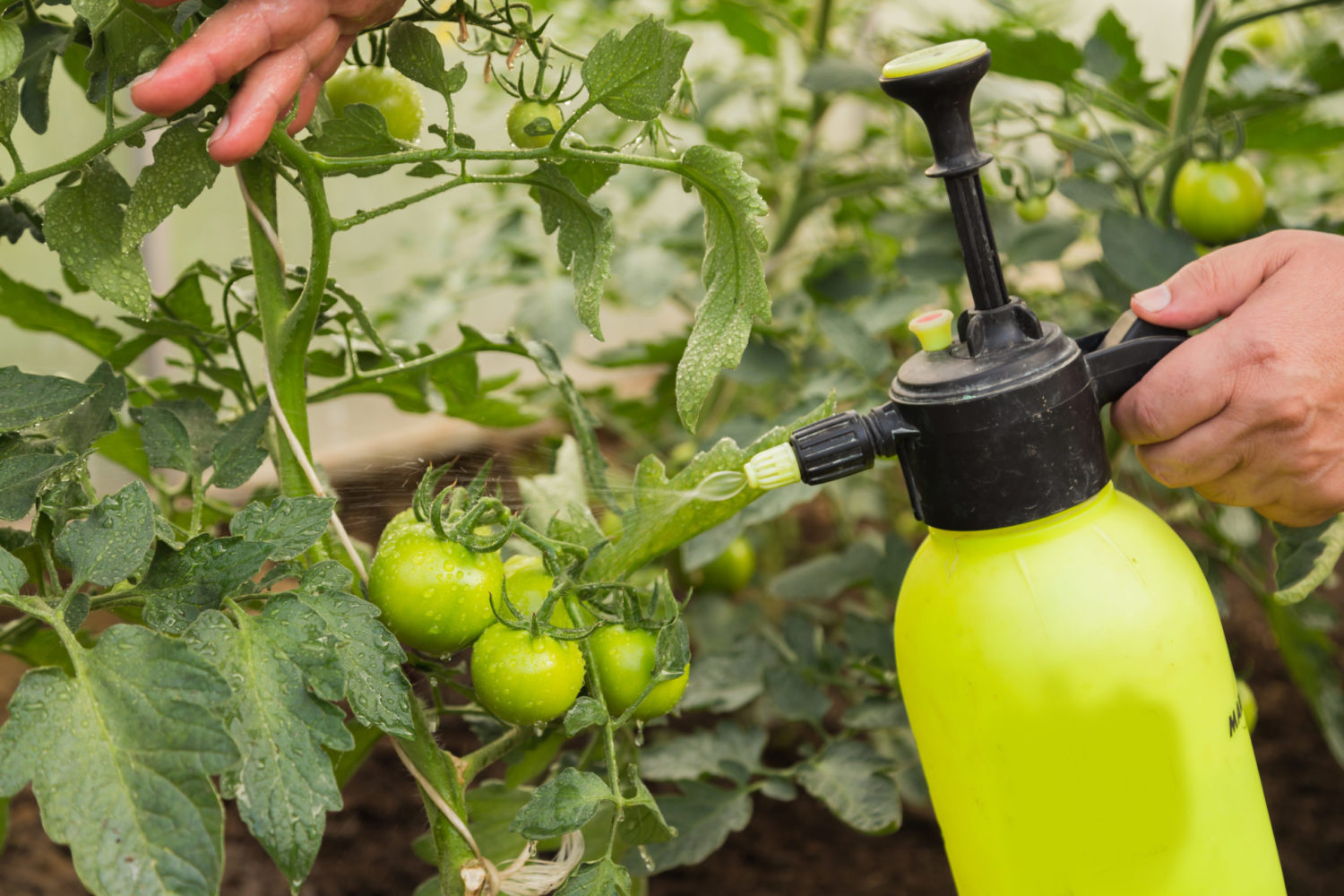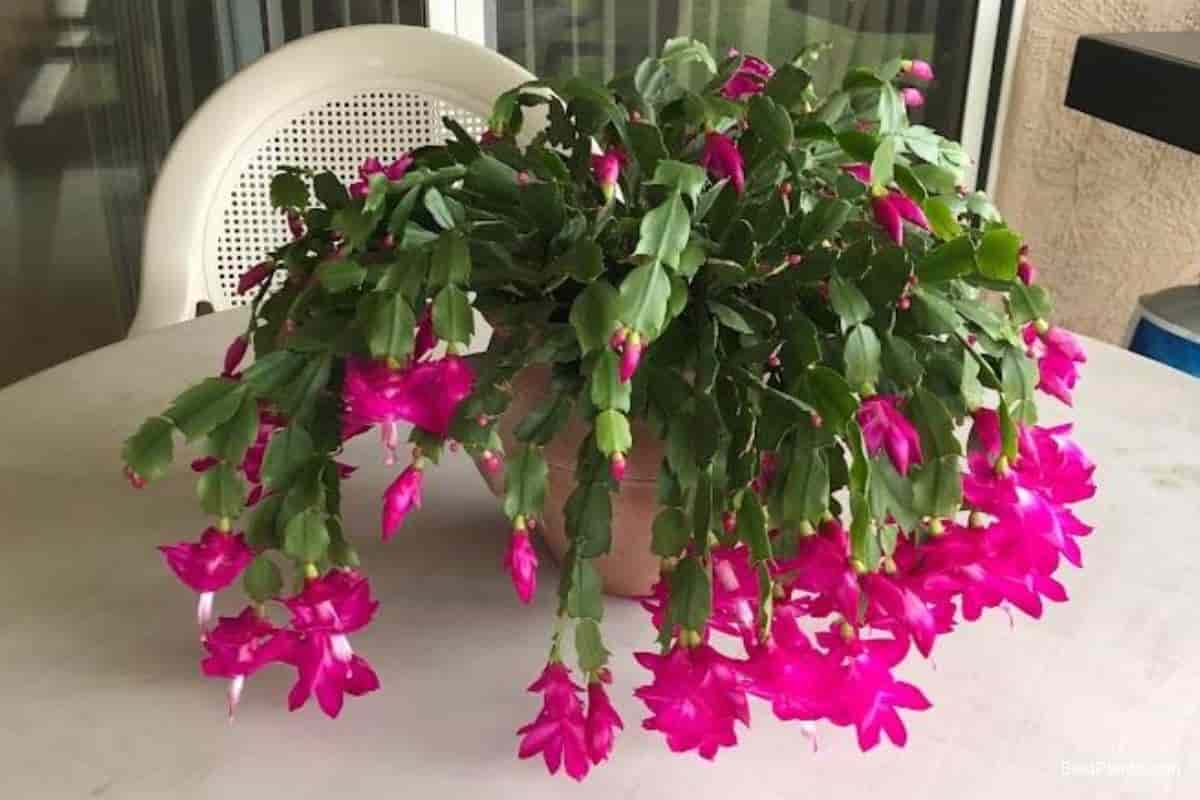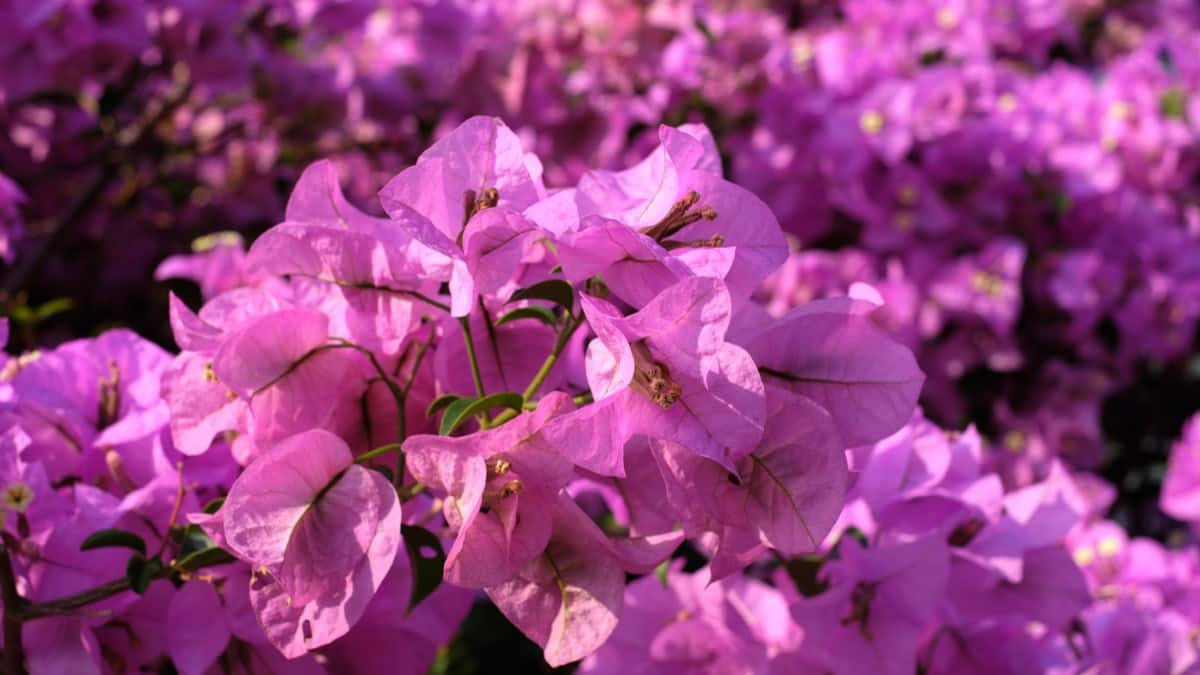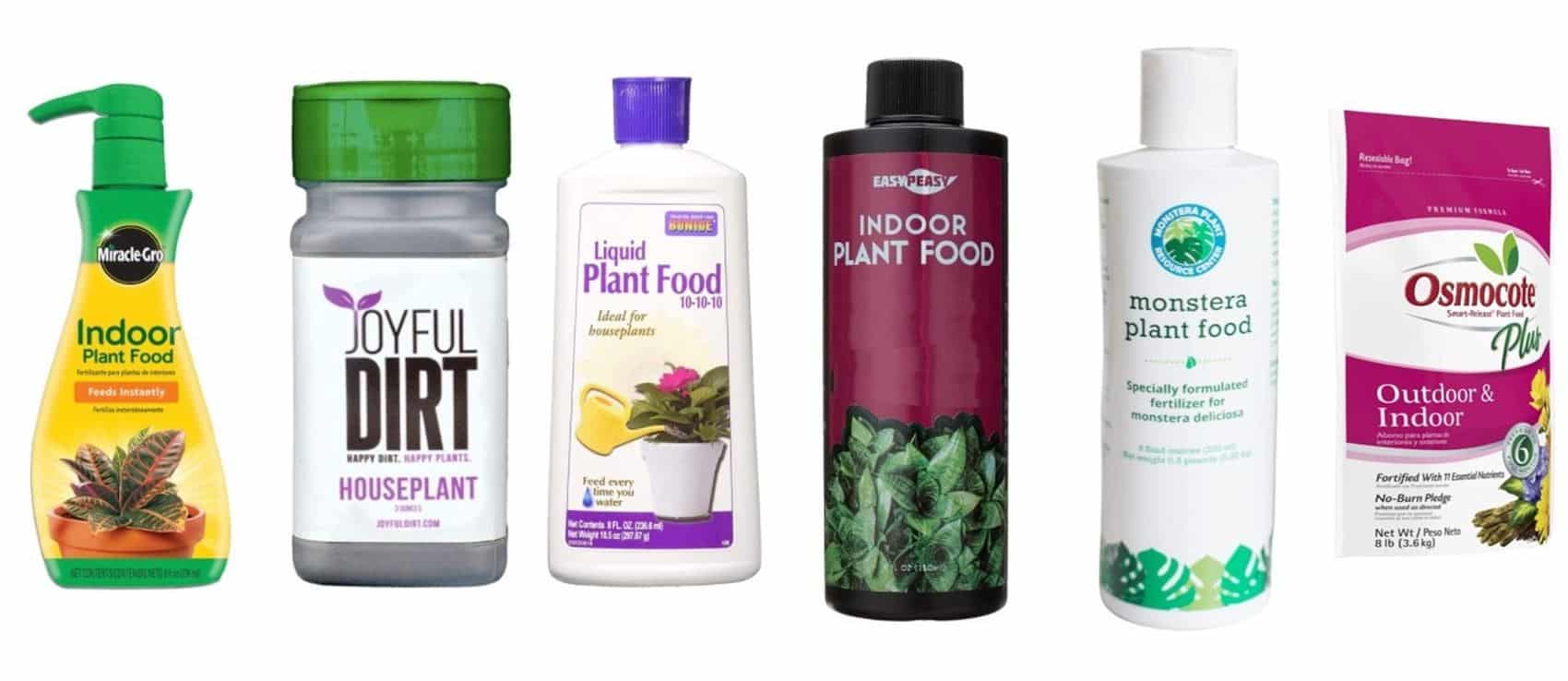Home>Gardening Techniques>DIY Projects>What Is Granular Fertilizer
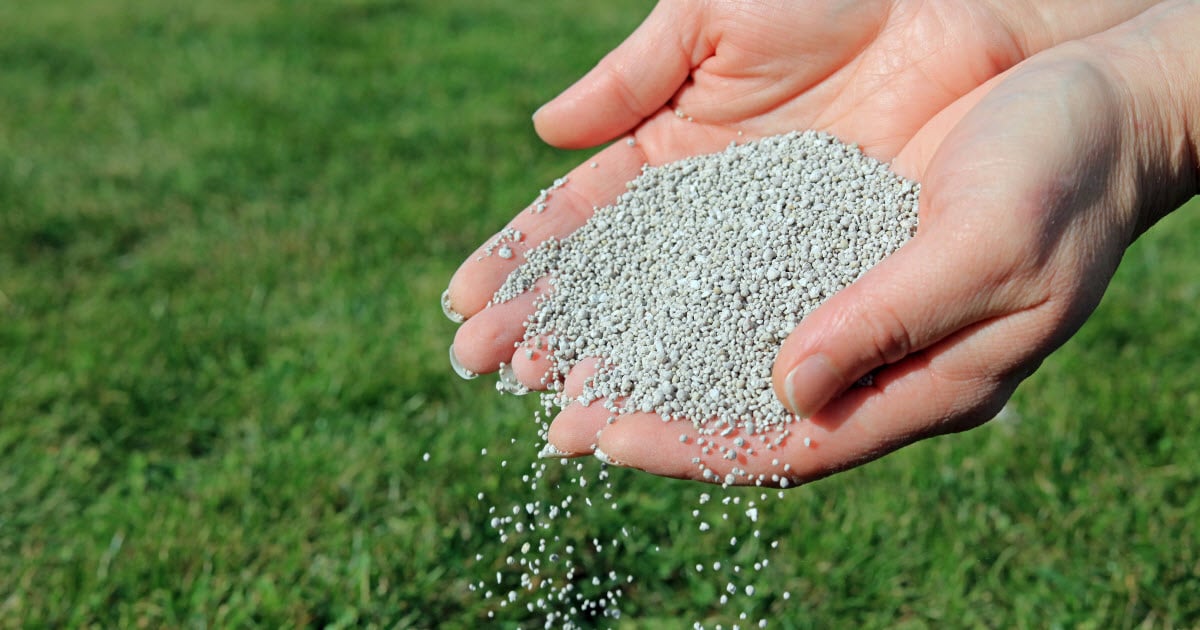

DIY Projects
What Is Granular Fertilizer
Modified: January 22, 2024
Discover the benefits of DIY projects with granular fertilizer. Enhance the health and growth of your plants with this versatile and cost-effective solution.
(Many of the links in this article redirect to a specific reviewed product. Your purchase of these products through affiliate links helps to generate commission for Chicagolandgardening.com, at no extra cost. Learn more)
Table of Contents
- Introduction
- Definition of Granular Fertilizer
- Benefits of Using Granular Fertilizer
- Different Types of Granular Fertilizer
- Factors to Consider When Choosing Granular Fertilizer
- How to Apply Granular Fertilizer
- Pros and Cons of Granular Fertilizer
- Tips for Storing Granular Fertilizer
- Common Mistakes to Avoid When Using Granular Fertilizer
- Environmental Impact and Safety Considerations of Granular Fertilizer
- Conclusion
Introduction
Welcome to the world of DIY projects! Whether you’re a seasoned DIY enthusiast or just starting out, there’s something captivating about taking matters into your own hands and creating something from scratch. DIY projects not only allow you to unleash your creativity, but they also provide a sense of fulfillment and satisfaction as you see your vision come to life.
From building furniture to renovating your backyard, the possibilities are endless. However, one key factor in the success of any DIY project is using the right tools and materials. One essential material that can significantly impact the outcome of your projects is granular fertilizer.
Granular fertilizer is a popular choice for both professional gardeners and DIY enthusiasts due to its ease of use and effectiveness. By understanding what granular fertilizer is and how to use it properly, you can enhance the growth and quality of your plants, flowers, and vegetables.
In this article, we will delve into the world of granular fertilizer. We will explain what it is, discuss its benefits, explore different types of granular fertilizers, provide tips for choosing the right one, and give you guidance on how to correctly apply it to your projects. We will also discuss the pros and cons of using granular fertilizer and offer advice on storage and common mistakes to avoid.
Additionally, we’ll touch on the environmental impact and safety considerations associated with granular fertilizer, as it’s important to consider the long-term effects of our DIY projects on the planet and our well-being.
So, if you’re ready to take your DIY projects to the next level and achieve stunning results, let’s dive in and explore the world of granular fertilizer!
Definition of Granular Fertilizer
Granular fertilizer is a type of fertilizer that comes in the form of small, solid pellets or granules. It is designed to provide essential nutrients to plants, helping them grow and thrive. The granules are typically made from a mixture of nitrogen, phosphorus, and potassium, along with other micronutrients that plants need for healthy development.
Unlike liquid fertilizers, which are applied directly to the soil or foliage, granular fertilizers are sprinkled or spread onto the soil surface around the base of plants. When watered or irrigated, the granules dissolve slowly, releasing nutrients into the soil. The slow-release properties of granular fertilizer allow for a steady and sustained supply of nutrients over an extended period.
Granular fertilizer is available in various formulations to meet the specific needs of different plants and soil types. These formulations are typically indicated by numbers on the fertilizer packaging, representing the percentage by weight of the three primary nutrients: nitrogen (N), phosphorus (P), and potassium (K). For example, a common formulation for a balanced fertilizer is 10-10-10, which means it contains 10% nitrogen, 10% phosphorus, and 10% potassium.
In addition to the three primary nutrients, granular fertilizers can also contain secondary nutrients such as calcium, magnesium, and sulfur, as well as micronutrients like iron, manganese, and zinc. These additional nutrients support specific aspects of plant growth and development, ensuring optimal health and productivity.
Granular fertilizers are available in both organic and synthetic forms. Organic granular fertilizers are made from natural materials, such as compost, manure, or bone meal. They provide slow-release nutrients and improve soil fertility over time. Synthetic granular fertilizers, on the other hand, are chemically formulated to deliver specific nutrient ratios and immediate results.
With their easy application and controlled nutrient release, granular fertilizers offer a convenient and efficient way to supply plants with the essential nutrients they need for healthy growth. By choosing the right formulation for your specific plants and following proper application techniques, you can promote strong root development, vibrant foliage, abundant flowering, and bountiful harvests in your DIY projects.
Benefits of Using Granular Fertilizer
Using granular fertilizer in your DIY projects provides numerous benefits that contribute to the health and vitality of your plants. Here are some key advantages:
- Convenience: Granular fertilizers are easy to use and require minimal effort. They can be applied by simply sprinkling or spreading the granules around the base of plants. Unlike liquid fertilizers, there is no need for mixing or measuring, making granular fertilizers a convenient option for DIY enthusiasts of all skill levels.
- Slow-release nutrients: One of the significant advantages of granular fertilizers is their slow-release properties. The nutrients in granules dissolve gradually over time, ensuring a steady supply of nourishment to plants. This slow-release mechanism prevents the risk of nutrient burn or overdose, providing a balanced and sustained nutrient uptake by the plants.
- Long-lasting effects: Granular fertilizers have a lasting impact on plant health. The slow-release of nutrients allows for continuous feeding over an extended period, reducing the need for frequent application. This long-lasting effect ensures consistent growth, vibrant foliage, and abundant blooms throughout the growing season.
- Customizable nutrient ratios: Granular fertilizers come in various formulations, allowing you to customize the nutrient ratios based on your specific plant needs. Whether you require higher nitrogen content for leafy vegetables, more phosphorus for robust root development, or increased potassium for improved flowering and fruiting, there is a granular fertilizer formulation available to meet your requirements.
- Improved soil health: Granular fertilizers not only nourish plants but also enhance soil fertility. The slow-release nutrients leach into the soil, promoting beneficial microbial activity and improving soil structure. This leads to improved water retention, nutrient availability, and overall soil health, creating a favorable environment for plants to thrive.
- Reduced leaching: Unlike liquid fertilizers that can be prone to leaching and runoff, granular fertilizers have minimal risk of nutrient loss. The granules stay in place until dissolved, minimizing the likelihood of valuable nutrients being washed away by rain or excessive watering. This ensures that the plants receive maximum benefit from the applied fertilizer.
By utilizing granular fertilizer in your DIY projects, you can enjoy the convenience, slow-release benefits, customizable nutrient ratios, improved soil health, and reduced leaching. These advantages contribute to the overall success and prosperity of your plants, allowing you to achieve remarkable results and take pride in your DIY creations.
Different Types of Granular Fertilizer
When it comes to granular fertilizers, there are several types available, each catering to specific plant needs and soil conditions. Understanding the different types can help you choose the most suitable fertilizer for your DIY projects. Here are some common types of granular fertilizers:
- Nitrogen-based fertilizers: These fertilizers are high in nitrogen content, which promotes lush, green foliage growth. They are ideal for leafy vegetables, lawns, and plants that require vigorous vegetative development. Nitrogen-based fertilizers are often indicated by a higher first number in their formula, such as 24-0-0, signifying 24% nitrogen.
- Phosphorus-based fertilizers: Fertilizers rich in phosphorus are essential for root development, flowering, and fruit set. They are especially beneficial for establishing new plants or encouraging bud formation. Look for fertilizers labeled with higher second numbers in their formula, such as 0-12-0, indicating 12% phosphorus.
- Potassium-based fertilizers: These fertilizers provide plants with potassium, which is crucial for overall plant health, disease resistance, and fruiting. Potassium-based fertilizers are suitable for a wide range of plants, including flowers, fruits, and vegetables. Look for fertilizers with a higher third number in their formula, such as 0-0-20, representing 20% potassium.
- Complete fertilizers: Complete fertilizers are balanced formulations that contain a combination of nitrogen, phosphorus, and potassium in varying ratios, such as 10-10-10 or 20-20-20. They provide a comprehensive nutrient supply for overall plant growth and development.
- Slow-release fertilizers: Slow-release fertilizers are designed to release nutrients gradually over an extended period. They typically consist of coated granules that dissolve slowly, ensuring a continuous supply of nutrients to the plants. Slow-release fertilizers are ideal for situations where frequent applications are impractical.
- Organic fertilizers: Organic granular fertilizers are made from natural materials such as compost, manure, bone meal, or fish emulsion. They provide slow-release nutrients and improve soil health over time. Organic fertilizers are an excellent choice for environmentally-conscious DIY enthusiasts.
It is crucial to consider the specific nutrient requirements of your plants, soil conditions, and the growth stage when selecting a granular fertilizer. Additionally, use caution when dealing with fertilizer blends that contain chemicals and follow the instructions on the packaging for proper application rates.
By understanding the different types of granular fertilizers available and their respective benefits, you can make informed decisions and provide your DIY project plants with the precise nutrient support they need for vigorous growth and abundant yields.
Factors to Consider When Choosing Granular Fertilizer
Choosing the right granular fertilizer for your DIY projects is crucial to ensure optimum plant growth and health. Here are some essential factors to consider when selecting the appropriate fertilizer:
- Nutrient requirements: Different plants have varying nutrient needs. Before choosing a granular fertilizer, identify the specific nutrient requirements of your plants. Some may require higher nitrogen for foliage growth, while others may need more phosphorus for root development or potassium for flowering and fruiting. Match the nutrient ratios of the fertilizer to the needs of your plants.
- Soil analysis: Conducting a soil analysis can provide valuable information about the nutrient deficiencies or imbalances in your soil. A soil test will measure the pH level, nutrient levels, and organic matter content. By knowing the nutrient composition of your soil, you can select a granular fertilizer that complements its needs and adjusts nutrient deficiencies.
- Fertilizer formulation: Consider the formulation and release rate of the granular fertilizer. Slow-release fertilizers provide a steady supply of nutrients over an extended period, reducing the need for frequent applications. Fast-release fertilizers deliver nutrients quickly but may require more frequent reapplication. Choose a formulation that aligns with your project’s timeframe and labor requirements.
- Organic vs. synthetic: Decide whether to use organic or synthetic granular fertilizers. Organic fertilizers are derived from natural sources and provide slow-release nutrients that improve soil fertility over time. They are environmentally-friendly but may have lower nutrient concentrations. Synthetic fertilizers are chemically formulated to deliver specific nutrient ratios and immediate results. Consider your personal preferences, environmental concerns, and the needs of your plants when making this choice.
- Application method: Consider the application method that suits your DIY projects. Granular fertilizers can be applied manually by hand or using a fertilizer spreader. Determine which method is most feasible and efficient for your specific project size and location.
- Cost: Evaluate the cost-effectiveness of different granular fertilizers. Compare pricing per pound or kilogram and consider the nutrient concentration and coverage area of each fertilizer. Factor in the longevity of the fertilizer and its effects on plant health and overall project success.
- Safety considerations: Pay attention to safety considerations when handling granular fertilizers. Read and follow the instructions provided on the packaging, including precautions for storage, handling, and application. Protect yourself by wearing appropriate protective gear, such as gloves and goggles, when working with fertilizers.
By taking these factors into account when choosing a granular fertilizer for your DIY projects, you can ensure that your plants receive the right nutrients, address soil deficiencies, and optimize their growth and productivity. Remember to always follow the recommended application rates and practice responsible fertilizer use for the best results.
How to Apply Granular Fertilizer
Applying granular fertilizer correctly is essential to ensure that your plants receive the nutrients they need for optimal growth. Here are the steps to follow when applying granular fertilizer to your DIY projects:
- Read the instructions: Start by reading and understanding the instructions on the fertilizer packaging. Each fertilizer may have specific application rates and guidelines that you need to follow for optimal results.
- Prepare the area: Before applying the granular fertilizer, prepare the area by removing any weeds or debris from the soil surface. It’s also a good idea to water the soil lightly to ensure it is moist but not saturated.
- Measure the amount: Determine the appropriate amount of fertilizer to use based on the instructions and the size of the area you are fertilizing. Use a scale or measuring cup to accurately measure the desired quantity.
- Apply evenly: Spread the granular fertilizer evenly over the soil surface. You can do this by hand, wearing gloves, or by using a fertilizer spreader for larger areas. Make sure to distribute the fertilizer uniformly, avoiding clumps or overconcentration in one spot.
- Avoid contact with plant leaves: Be careful to avoid direct contact between the granular fertilizer and the leaves or stems of your plants. If any granules accidentally come into contact with the foliage, brush them off carefully to prevent any potential burn or damage.
- Water the area: After applying the granular fertilizer, water the area thoroughly. This will help dissolve the granules and start the release of nutrients into the soil. The watering also helps to prevent the fertilizer from sitting on the soil surface, reducing the risk of nutrient loss due to runoff.
- Follow up with irrigation: Depending on the specific fertilizer instructions, you may need to follow up with regular irrigation or watering. This ensures that the nutrients are properly absorbed by the roots and distributed throughout the plant.
It is essential to follow the recommended application rates and guidelines provided by the fertilizer manufacturer. Over-fertilizing can damage plants, while under-fertilizing may not provide sufficient nutrients for optimal growth. Regular monitoring of the plants and observation of any signs of nutrient deficiencies or excesses can help you adjust your fertilization routine as needed.
By correctly applying granular fertilizer to your DIY projects, you can provide your plants with the necessary nutrients for robust growth, lush foliage, vibrant blooms, and bountiful harvests.
Pros and Cons of Granular Fertilizer
Granular fertilizer offers several advantages and disadvantages when it comes to nourishing your plants in DIY projects. Understanding the pros and cons can help you make informed decisions about whether granular fertilizer is the right choice for your specific needs. Here are some key points to consider:
Pros:
- Convenience: Granular fertilizers are easy to use and require minimal effort. They can be applied by simply sprinkling or spreading them around the base of plants, making them ideal for DIY enthusiasts of all levels.
- Slow-release nutrients: Granular fertilizers release nutrients gradually over an extended period. This slow-release mechanism ensures a continuous supply of nutrients to the plants, reducing the risk of nutrient burn or overdose and providing a balanced and sustained nutrient uptake.
- Long-lasting effects: The slow-release nature of granular fertilizers means that their effects last longer compared to other types of fertilizers. They provide consistent feeding to the plants over an extended period, reducing the need for frequent applications.
- Customizable nutrient ratios: Granular fertilizers come in various formulations with different nutrient ratios. This allows you to choose the fertilizer that matches the specific needs of your plants, whether they require higher nitrogen for foliage growth, more phosphorus for root development, or increased potassium for flowering and fruiting.
- Reduced leaching: Granular fertilizers have minimal risk of nutrient leaching compared to liquid fertilizers. The granules stay in place until they dissolve, minimizing the likelihood of valuable nutrients being washed away by rain or excessive watering. This ensures that plants receive maximum benefit from the applied fertilizer.
Cons:
- Initial Availability: Granular fertilizers need time for the granules to dissolve and release nutrients into the soil. This can lead to a delay in nutrient availability for plants, especially if fast results are desired.
- Inconsistent coverage: Achieving even coverage when applying granular fertilizer can be challenging, particularly in uneven or sloped areas. Uneven distribution of fertilizer may result in inconsistent nutrient uptake by plants and ultimately affect their growth and development.
- Potential for over-application: Since granular fertilizers are often applied by hand, there is a risk of over-applying fertilizer if not measured and distributed carefully. Over-application can lead to nutrient imbalances, burning of plant roots, or environmental pollution.
- Slow-acting for immediate needs: Granular fertilizers are not suitable for addressing immediate nutritional deficiencies or correcting rapid changes in plant health. For quick nutrient boosts, liquid or foliar fertilizers may be more appropriate.
- Environmental impact: Improper use or excessive application of granular fertilizers can contribute to nutrient runoff, leading to water pollution. It is essential to follow recommended application rates and consider the environmental impact of fertilizer use.
Considering the pros and cons of granular fertilizer can help you determine if it is the right choice for your DIY projects. It offers convenience, slow-release nutrients, long-lasting effects, customizable nutrient ratios, and reduced nutrient leaching. However, it may have limitations in terms of initial availability, consistent coverage, potential for over-application, and response time to immediate nutrient needs. Responsible use and proper application techniques can help mitigate any potential drawbacks and maximize the benefits of granular fertilizer in your DIY endeavors.
Tips for Storing Granular Fertilizer
Proper storage of granular fertilizer is essential to maintain its effectiveness and prevent potential hazards. Here are some important tips to follow when storing granular fertilizer for your DIY projects:
- Keep in original packaging: It is best to store granular fertilizer in its original packaging. The packaging is designed to protect the fertilizer from moisture and maintain its potency. If the packaging becomes damaged or torn, transfer the fertilizer to an airtight container.
- Store in a cool, dry place: Granular fertilizer should be stored in a cool, dry location. Exposure to high temperatures and humidity can degrade the fertilizer and reduce its effectiveness. Store the fertilizer away from direct sunlight and sources of heat.
- Ensure proper ventilation: While it is important to keep the fertilizer dry, it is equally important to provide adequate ventilation. Proper airflow helps prevent the buildup of moisture, which can lead to clumping or deterioration of the fertilizer.
- Keep away from children and pets: Store granular fertilizer out of reach of children and pets. Fertilizers contain concentrated nutrients that can be harmful if ingested. Keep the fertilizer in a secured location or use childproof locks to prevent accidental access.
- Label and date containers: If you transfer the fertilizer to a different container, make sure to label it clearly with the fertilizer type, date of storage, and any specific instructions. This will help you keep track of the fertilizer’s age and ensure that you use the oldest stock first.
- Separate different types of fertilizer: If you have multiple types of granular fertilizers, store them separately to prevent cross-contamination. Different fertilizers may have varying nutrient ratios and chemical compositions, and mixing them can lead to undesirable effects on your plants.
- Maintain pest control: Granular fertilizers can attract pests, such as rodents or insects. Inspect the storage area regularly for signs of pest activity and take appropriate measures to control them. Consider using pest deterrents or traps to minimize the risk of infestation.
- Dispose of expired or damaged fertilizer: Granular fertilizers have a shelf life. If you come across expired or damaged fertilizer, safely dispose of it according to local regulations. Avoid using expired fertilizers, as they may not provide the desired nutrients and can potentially harm your plants.
By following these storage tips, you can ensure that your granular fertilizer remains in good condition and maintains its effectiveness for your DIY projects. Proper storage helps preserve the quality of the fertilizer and protects both your plants and the environment from potential harm.
Common Mistakes to Avoid When Using Granular Fertilizer
While using granular fertilizer can greatly benefit your DIY projects, it’s important to be aware of common mistakes that can diminish its effectiveness or cause potential harm. By avoiding these mistakes, you can ensure the optimal use of granular fertilizer and promote healthy plant growth. Here are some common mistakes to avoid:
- Over-application: Applying too much granular fertilizer can lead to nutrient imbalances, root burn, or environmental pollution. Always follow the recommended application rates and guidelines specified on the fertilizer packaging.
- Uneven distribution: Failing to evenly distribute the granular fertilizer can result in inconsistent nutrient availability for your plants. Take care to spread the granules evenly across the soil surface, ensuring uniform coverage and preventing over or under-fertilization in certain areas.
- Improper timing: Applying granular fertilizer at the wrong time can be ineffective or harmful. Make sure to apply the fertilizer at the appropriate stage of plant growth. Consider factors such as weather conditions, the growth cycle of the plant, and the specific fertilizer’s recommended timing.
- Application near plant stems: Avoid applying granular fertilizer directly next to plant stems. Placing the fertilizer too close to the base of plants can harm the roots and lead to burning or stunted growth. Instead, spread the fertilizer a few inches away from the stems.
- Failure to water after application: Watering the area after applying granular fertilizer is crucial to dissolve the granules and activate their nutrient release. Failing to water the fertilizer can delay the release of nutrients and reduce its effectiveness.
- Using the wrong fertilizer for the plant: Different plants have unique nutrient requirements. Using the wrong type of granular fertilizer can result in nutrient imbalances or deficiencies. Ensure you choose a fertilizer that matches the specific needs of your plants.
- Ignoring soil conditions: Soil conditions play a vital role in plant growth and nutrient uptake. Ignoring the soil’s pH level, nutrient deficiencies, or excessive levels can affect the effectiveness of the granular fertilizer. Conduct a soil test and address any soil issues before applying the fertilizer.
- Failure to store the fertilizer properly: Storing granular fertilizer in unsuitable conditions can lead to its degradation or loss of effectiveness. Improper storage can also pose risks to children, pets, and the environment. Follow the recommended storage guidelines to maintain the fertilizer’s quality.
By avoiding these common mistakes, you can ensure that your use of granular fertilizer in your DIY projects is efficient, effective, and safe. Proper application techniques and careful attention to the specific needs of your plants and soil conditions will help you achieve healthy and thriving results.
Environmental Impact and Safety Considerations of Granular Fertilizer
While granular fertilizer can greatly benefit plant growth in DIY projects, it’s important to be aware of its potential environmental impact and safety considerations. Responsible use of granular fertilizer can help minimize negative effects and ensure the well-being of the environment and individuals. Here are some key considerations:
Environmental Impact:
Water pollution: Improper use or excessive application of granular fertilizer can contribute to water pollution. When granules are washed away by rain or excessive irrigation, they can find their way into water bodies, causing nutrient runoff. This can lead to eutrophication, harmful algal blooms, and degradation of water quality. It’s important to apply the fertilizer according to recommended rates and avoid application before heavy rain or on slopes where runoff is more likely.
Air pollution: Some granular fertilizers contain nitrogen compounds that can be released into the atmosphere as ammonia gas through a process called volatilization. Ammonia emissions contribute to air pollution and can have harmful effects on human health and ecosystems. To minimize volatilization, it’s advisable to incorporate granular fertilizers into the soil or apply them when rain is forecasted to aid in soil absorption.
Soil degradation: Continuous and excessive use of granular fertilizer without regard for soil testing can lead to soil degradation. Over time, nutrient imbalances and the buildup of salts can occur, negatively impacting soil structure, microbial activity, and overall soil health. To prevent soil degradation, conduct regular soil tests to determine the appropriate nutrient requirements and adjust fertilizer application accordingly.
Safety Considerations:
Read and follow instructions: Always read and follow the instructions provided by the fertilizer manufacturer. The instructions include important safety precautions, such as proper handling, protective gear requirements, and storage recommendations. Adhering to these instructions will help minimize risks associated with fertilizer use.
Protective gear: When handling granular fertilizer, it’s advisable to wear appropriate protective gear, such as gloves and goggles. This is to prevent skin contact and eye irritation from the fertilizer’s components. Remember to wash hands thoroughly after handling fertilizers, particularly before eating or drinking.
Child and pet safety: Keep granular fertilizer out of reach of children and pets. Fertilizers, even in granular form, contain concentrated nutrients that can be harmful if ingested. Store the fertilizer in a secured location and use childproof locks or barriers to prevent accidental access.
Proper disposal: When disposing of unused or expired granular fertilizer, follow local regulations and guidelines. Improper disposal can lead to environmental contamination. Contact your local waste management authority or extension service for guidance on how to dispose of the fertilizer properly.
Consider organic alternatives: Organic granular fertilizers, made from natural materials, offer a more environmentally-friendly alternative to synthetic fertilizers. They promote soil health, reduce the risk of nutrient runoff, and minimize the potential for adverse environmental impacts. Consider using organic fertilizers whenever possible.
By considering the environmental impact and adhering to safety guidelines, you can use granular fertilizer responsibly in your DIY projects. This ensures the well-being of the environment, safeguards human health, and promotes sustainable gardening practices.
Conclusion
Granular fertilizer is a valuable tool for DIY enthusiasts looking to enhance the growth and vitality of their plants. By understanding the definition, benefits, types, and proper usage of granular fertilizer, you can make informed decisions to maximize the success of your DIY projects.
Granular fertilizer offers convenience, slow-release nutrients, long-lasting effects, customizable nutrient ratios, and reduced leaching. It provides a convenient and efficient way to supply plants with the essential nutrients they need for healthy growth. However, it is important to apply granular fertilizer correctly and avoid common mistakes to prevent nutrient imbalances, root burn, and environmental pollution.
Consider factors such as the nutrient requirements of your plants, soil conditions, and the specific needs of different DIY projects when choosing the appropriate granular fertilizer. Read the instructions carefully, apply it evenly, and water the area after application to ensure optimal nutrient uptake. Also, be mindful of environmental impact and safety considerations, such as water and air pollution, soil degradation, proper storage, protective gear, and responsible disposal of unused or expired fertilizer.
By employing these guidelines and practicing responsible fertilizer use, you can optimize the growth, health, and productivity of your plants while minimizing potential harm to the environment and promoting sustainability in your DIY projects.
So go ahead, dive into the world of granular fertilizer and unleash your creativity in your DIY projects, knowing you have the knowledge and expertise to nurture your plants to their fullest potential!


